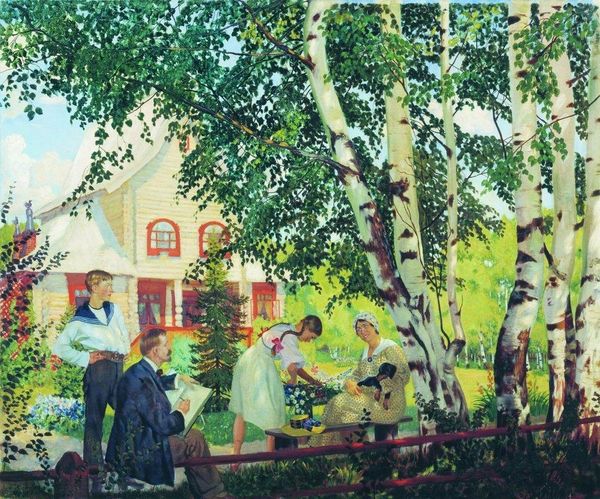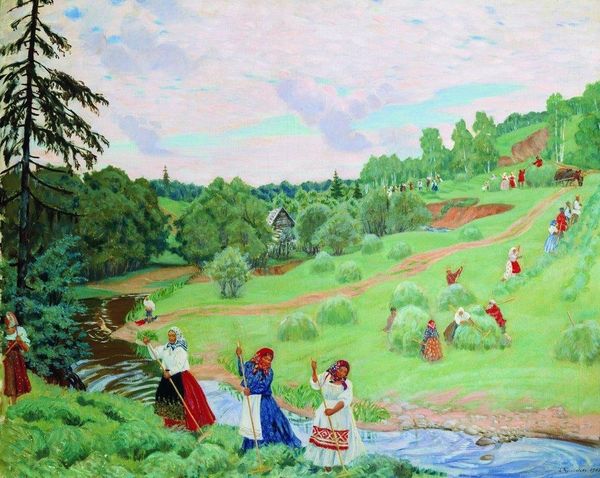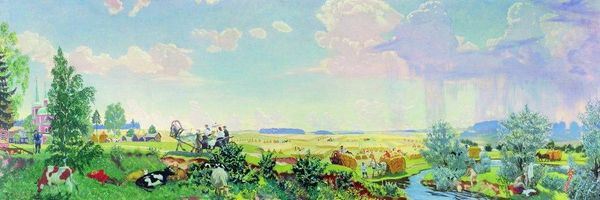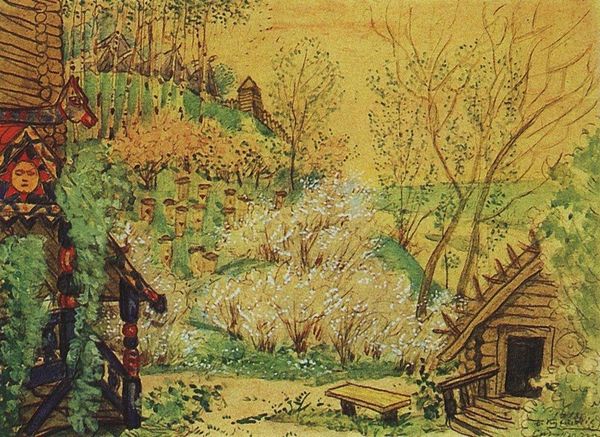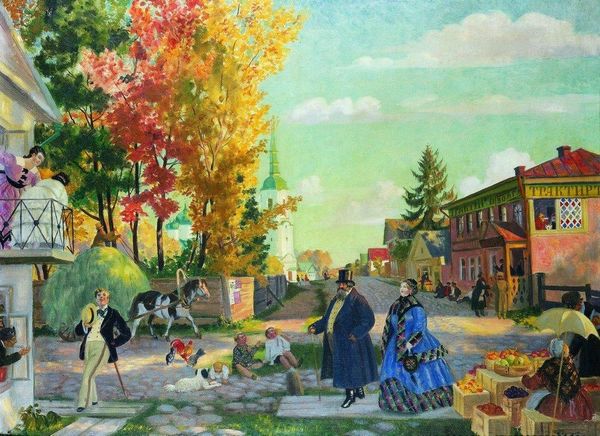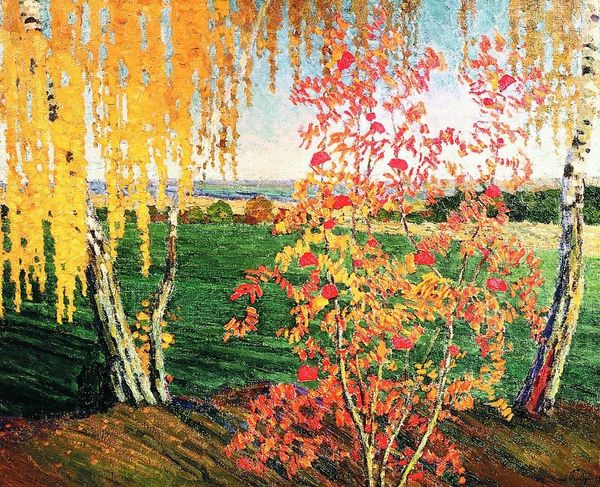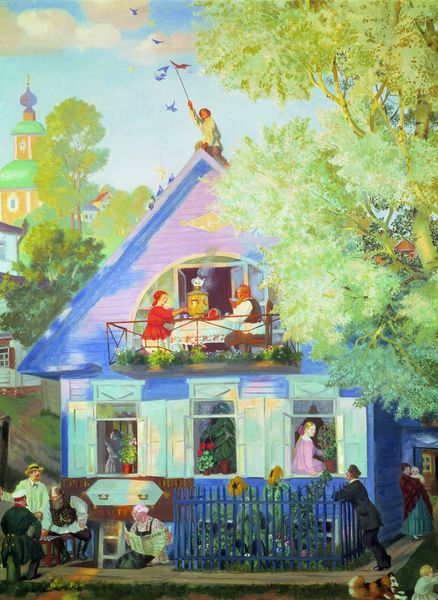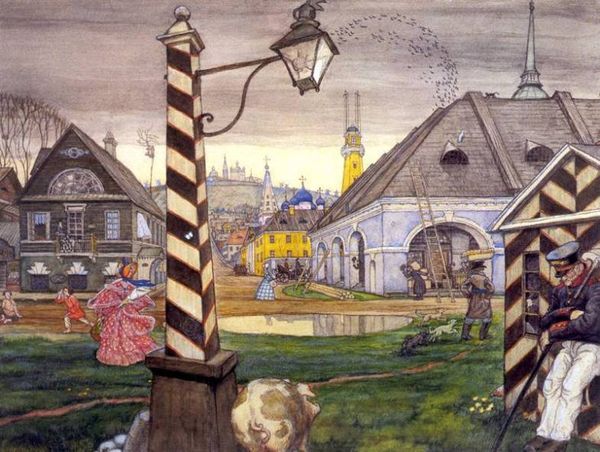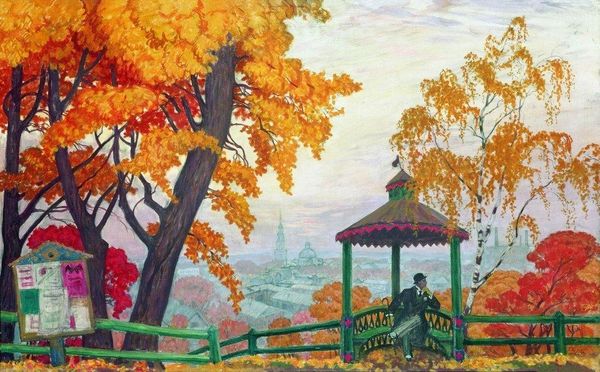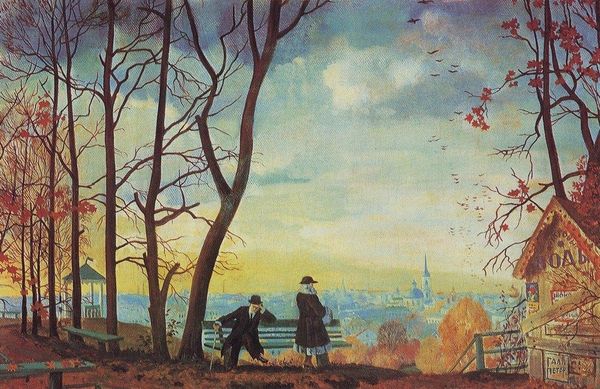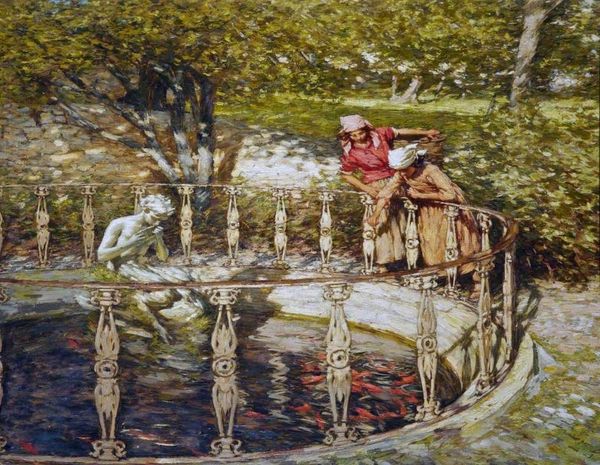
Dimensions: 70.5 x 124 cm
Copyright: Public domain
Curator: Boris Kustodiev painted "Apple Orchard" in 1918. It's an oil painting currently residing in the Tomsk Regional Museum of Fine Arts. Editor: It bursts with such optimism, doesn’t it? All this lush foliage, those bright dabs of red apples. The textures are so dense, it looks like a tapestry! Curator: Absolutely. Kustodiev crafted a highly romanticized vision of Russian provincial life here, just after the revolution, perhaps as a way to return to simpler times in spirit. Notice the composition, though – it draws on the conventions of genre painting, with people depicted engaged in everyday life and apple-picking in the foreground, gathering for tea behind. This idyllic scene becomes a window into cultural and historical experiences of this period. Editor: Speaking of conventions, look at the samovar—a centerpiece for socializing! And I'm so interested in his choice of oil paint. The brushstrokes are so thick, almost sculptural in places. Do you think the availability, or lack thereof, of specific pigments at this time played a role in this striking coloration? How did the material limitations affect his art-making? Curator: Undoubtedly. And think about the broader context; it was painted during immense social upheaval, a time of shortages and immense material struggles. Kustodiev uses a deliberately nostalgic palette as a response to those anxieties of his time, maybe the memory of warmth. Editor: Right. The very act of painting such a bountiful scene—overflowing apple trees, overflowing table, felt quite potent. Like an act of defiance and a way of clinging onto the cultural heritage that he valued. Curator: It becomes a space for asserting and celebrating enduring values in a time of enormous transition. We can still recognize, over a century later, a very intentional focus on these traditions that served a very real role for its original audiences, Editor: To really meditate on his techniques and choices—how Kustodiev constructed such a sensory experience given such constraint–it feels valuable and a lesson on sustainable art-making in itself! Curator: Well, the intersection of folk traditions and avant-garde art are what gives “Apple Orchard” such enduring resonance. It has certainly left me pondering the complex ways art reflects society, wouldn’t you agree? Editor: Agreed! I came into this conversation considering only how this work functions as artifact of Russian visual culture through materials, but now understand the rich interplay between culture and process more holistically. Thank you.
Comments
No comments
Be the first to comment and join the conversation on the ultimate creative platform.
